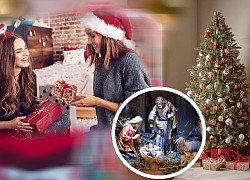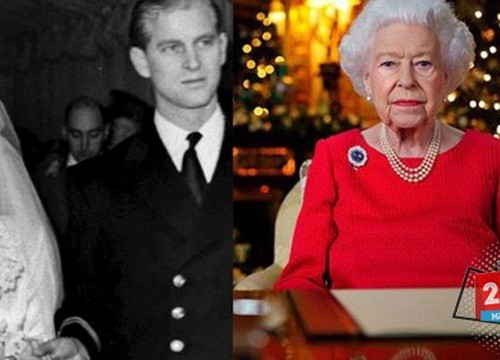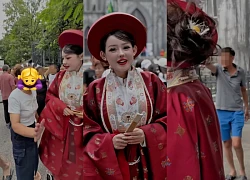Tran Thanh - Hari Won called for help on MXH, the act of responding to each other was extremely harsh in the midst of the divorce noise

4 | 0 Discuss | Share
Christmas is one of the most popular holidays globally, even in countries with few Christians. Each place will have its own organization and contain many interesting and equally strange stories.
When it comes to Christmas, many people will immediately think of pine trees, colorful decorations... which are familiar and extremely popular symbols of every year-end festival. In some parts of the world, there are extremely unique traditions on this special occasion, such as advent calendars, giant goats made of straw...
However, in some parts of Spain, children celebrate Christmas by beating a log until it "spills" out presents. This is not the only unusual holiday tradition that can be found around the world to this day.
Comparing Christmas traditions around the world, those differences become much more noticeable, especially when considering that many of them did not begin with Christmas at all.
Although the origins of the Mari Lwyd custom are relatively obscure, most scholars agree that it began as a pagan ritual. This tradition entails a group of people parading a horse skull around town, decorated in white robes with ribbons or holly and ivy flowing out like a "mane".
The group goes door to door with the skull, singing Welsh songs or participating in a ritual called penco, a rhyming game in which participants exchange playful quips.
If the homeowner loses, he must invite the Mari Lwyd procession inside and it is considered that he will have good luck for the year. On the contrary, if they win, then Mari Lwyd must throw a party for them.
Krampus has certainly become more widely known in recent years, at least in the US but in Austria - where stories about Krampus the Christmas devil have been passed down for centuries.
In fact, Krampus is so famous that every year in Munich (Germany), hundreds of people dress up as it and parade in the streets. This event is called Krampuslauf, also known as "Krampus Parade" or "Krampus Run".
This festive tradition is not limited to Munich either. Parades can be found throughout the Alpine region, including parts of Bavaria and Germany and now, even in some American cities.
Every year at exactly 6pm on December 7, the people of Guatemala (a country in Central America) participate in a tradition called "La Quema Del Diablo" or "Burning of the Devil".
The tradition began in colonial times, when people used to hang lanterns or light fires outside their homes on special occasions. This later evolved into the burning of evil effigies, as many people believed that evil lurked in their homes. This tradition also marks the official start of the Christmas season.
A long time ago, Norwegians believed that witches and evil spirits would appear on Christmas Eve. Superstitious people believe that these witches and spirits will steal their brooms to ride on. Therefore, many families chose to hide all their brooms to prevent witches from taking them. This tradition has continued until modern times.
Iceland's Christmas traditions are both fun and scary. Two famous Icelandic folk tales feature characters known as the Yule Cat and the Yule Lads. The Yule Cat is a giant cat-like creature attributed to Grýla, the goddess of Christmas. It snoops around and looks for naughty children to eat on Christmas Eve. Grýla is also said to have children, called Yule Lads.
In Canada, the post office officially recognizes Santa's address by postal code. Letters to Santa Claus in this country are addressed to: Santa Claus, North Pole, Canada, H0H 0H0.
In Greenland, the traditional Christmas meal is two dishes called kiviak and mattak. Kiviak is a dead seal skin - a type of small seabird stuffed with auks. Meanwhile, Mattak is a whale blubber dish, traditionally served by men to women during the Christmas meal here.
While many families celebrating Christmas may prepare stockings for Santa to leave small gifts, children in the Netherlands leave their shoes as they await a visit from Sinterklaas (patron saint). children). Instead of placing empty shoes for Sinterklaas to leave gifts inside, children fill the shoes with carrots, apples, and hay for Sinterklaas's horse to eat.
In the Czech Republic, it is customary for young, single women to throw their shoes over their shoulders at Christmas. This strange tradition is said to make predictions about marriage in the coming year.
Specifically, young girls stood near the door of a house, faced out and threw their shoe. If it lands with the toes facing the door, then the person will find themselves in a relationship within the next year. However, if it faces the other direction, she will remain single.
Since the 1970s, KFC restaurants across Japan have dressed life-sized statues of Colonel Sanders in Santa costumes. This caused locals and tourists alike to flock to KFC at Christmas and started a somewhat strange tradition.
Despite the fact that only about 1.5% of Japan's population is Christian, families across the country still line up outside KFC to buy a box of fried chicken on Christmas. According to KFC's own report, restaurants in the land of cherry blossoms often earn 10 times more revenue than normal on Christmas Eve.
The origin and deep meaning of the objects that appear on Christmas Day to help you love Christmas more  team youtuber11:57:24 18/12/2020Christmas has begun to creep into our daily lives: glowing pine trees Colorful, Santa Claus, reindeer... all too familiar, but are you sure you know all about this holiday? Let's explore interesting things with vgt! Giving gifts at Christmas
team youtuber11:57:24 18/12/2020Christmas has begun to creep into our daily lives: glowing pine trees Colorful, Santa Claus, reindeer... all too familiar, but are you sure you know all about this holiday? Let's explore interesting things with vgt! Giving gifts at Christmas

4 | 0 Discuss | Share

2 | 0 Discuss | Share

2 | 0 Discuss | Share

1 | 0 Discuss | Share

2 | 0 Discuss | Share

4 | 0 Discuss | Share










1 | 1 Discuss | Report